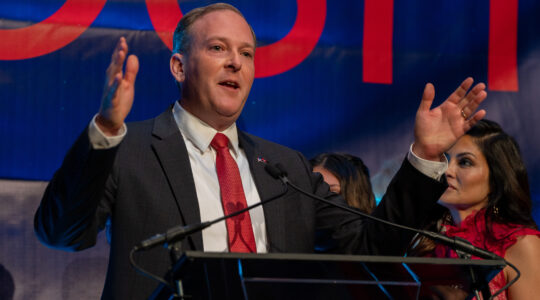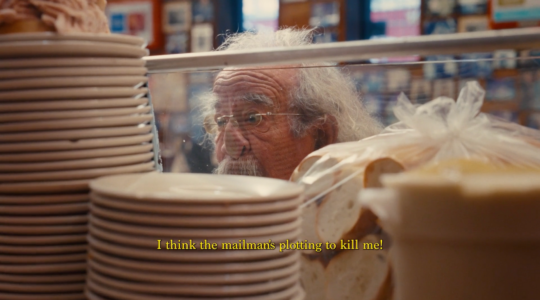In the 1930s, the prophets warned that people who let books burn will let people burn. And what of people who let holy places burn — for 30 months, anyway?
Well, said Rebbetzin Esther Jungreis, we see what’s happening in Israel every day.
In 2000, on Rosh HaShanah, the fifth day of this war, Israel’s army abandoned Joseph’s Tomb, after Palestinians set fire to its Torahs and legacy. Last week, Breslover chasidim, who persistently sneak back to the tomb, discovered that not only was the tomb ruined by fire, now the grave itself has been hammered into rubble. Joseph, who once knew pits and prisons, is now surrounded by car parts, trash, under a hole in the dome.
Prime Minister Ariel Sharon said vandalism of the tomb was serious, but apparently not that serious because the army will still not secure or guard the site, says The Jerusalem Post.
“It’s simply impossible,” an officer said, it would take a “fortress.” Even a Breslover added, “In today’s politics, the tomb and the grave are no longer of great interest.”
Jews are not allowed in this war zone. When the army catches chasidim here, they’re arrested. “Nablus is emerging as the capital of Palestinian terror in the West Bank,” says Army Radio, and the army has recently been carrying out operations in the casbah of this West Bank city that has grown around the biblical Shechem, where Joseph is.
When Hillel Lieberman, who lived nearby, heard the tomb was burning, he immediately ran to its rescue. He never came back, the first Jewish civilian to die in this war, though his body wasn’t found for a week. A Jewish policeman died defending the Tomb, as well.
In New York, Hillel’s sister, Elyorah, saw the news item on Joseph’s tomb and called Yael, Hillel’s widow, who lives near Shechem. They spoke, as Hillel would, with mystical wonderment about what could possibly be the meaning of it all. They spoke of Moses not leaving Egypt without Joseph’s bones; how Joseph said his place was in Shechem, perhaps for this very moment.
Rebbetzin Jungreis, spiritual leader of the Hineni Center, who at times taught classes in Rachel’s Tomb in Bethlehem, says many rabbis have pointed out that before the Messiah of David comes, there will first be the death of the Messiah of Joseph. Perhaps, people say, that’s what’s happening now, but who truly knew?
Israeli tanks rumble at will across the West Bank against an army that has no tanks at all. Is it really all that impossible to guard the one-square block of a tomb?
The rebbetzin wonders if there’s any other country that would be as ambivalent about defending its monuments and sacred space. For the Arabs, by contrast, all holy places — ours and theirs — have strategic purpose. They call this very war the Al-Aqsa Intifada, after the Dome of the Rock on the Temple Mount.
Cabinet minister Natan Sharansky said of Joseph, according to reports, “We are talking about the tomb of one of the fathers of our nation. I do not know who should be criticized more here, those who destroyed it, or ourselves for ignoring it.”
Support the New York Jewish Week
Our nonprofit newsroom depends on readers like you. Make a donation now to support independent Jewish journalism in New York.
More Jews remember the Alamo.
Arabs tell the world that Israel can’t be trusted to protect Islamic holy places. Can Israel be trusted with Jewish ones? Not only is Joseph’s Tomb off-limits, but Jews aren’t allowed to visit the Temple Mount, our holiest site. Hebron, the second holiest site, is visited at risk of death. Only last week Israel announced it would erect a high wall in Bethlehem around Rachel’s Tomb — our third holiest site — to protect it, after 30 months of war, bullets and firebombs, to prevent what happened to Joseph.
Jungreis tells us that when she visited Rachel’s Tomb a few months ago, she was the only one there. She had to turn on the fluorescent light herself. “In my life,” says the rebbetzin, after 30 years of visiting, “I never had to be the one to turn on the light.”
Jewish tourists can’t be expected to be more courageous than the politicians. For Christmas, though, Christian pilgrims find that Israel protects Bethlehem just beautifully.
The rebbetzin says the answer to the darkness was God — the last refuge in a country with no refuge.
Once upon a time, Rachel’s Tomb was the great symbol of Israel. Toby Willig, a longtime activist in Emunah, the women’s group, remembers that in her Bronx youth, pre-State, “We saw Kever Rachel everywhere: in my home, in other people’s homes, on books, on prints, on paintings in living rooms, on a boy’s tefillin box.
Every Jew, it seemed, had pictures of Kever Rachel.”
When was the last time anyone saw a picture of Rachel’s Tomb in anyone’s home? The Dome of the Rock has replaced it. The focus of almost all Jewish photographs in the last 25 years has not been Rachel’s Tomb but the Dome of the Rock. Yes, the Western Wall can be seen somewhere below it, but there’s usually more mosque than Wall. That mosque is more attractive to Jews as a symbol of Israel than anything else. You see the Dome everywhere, on synagogue walls, on Jewish publications, calendars, travel posters, everywhere Rachel used to be.
Rachel was once beloved. She is the only biblical personality, other than Moses, whose yahrzeit is remembered, like a mom’s. She was the first woman in the Bible to be romantically kissed — and a pre-marital kiss, at that. After that first kiss, Jacob cried. He could see where that kiss would lead. She died before she was 40, in childbirth, buried in Bethlehem by the side of the road, while her sister sleeps with their shared husband Jacob, and the other biblical greats in Hebron’s mystical cave.
Hebron’s Machpela is like the big family photograph at Jacob and Leah’s wedding. Rachel’s place is for the lonely. Known to pray for exiles, the exiles from Jewish Main Street feel at home where she sleeps. Known for being barren, the barren women take the bulletproof buses to ask her favor. You can imagine Rachel listening to a bluesy Naomi Shemer ballad — not the blaring, tinny metallic sounds you’d hear in Jewish catering halls. You imagine her in a slow dance, not a simcha dance. How did she pray at the midnight Tikkun Chatzot on that wedding night that should have been hers but wasn’t? This was a woman whom the Jews knew could understand them. The whole Jewish people felt that way, when our people still were whole.
Today, who cares? The New York Times says, “Right-wing Israelis have been pushing to fence Jewish holy sites into the Israeli side.” This is what it’s come to. Rachel is down to the right-wing.
This past week, Palestinian Authority’s Minister of Culture and Information Yasser Abed Rabbo said the decision to build a wall around Rachel’s “mosque” — the Bilal Ibn Rabah Mosque — “is the gravest measure perpetrated since the Palestinian Nakba [catastrophe of Israel’s birth] in 1948,” an “apartheid wall,” a prelude to “ethnic cleansing.” Of course, Jewish Bethlehem, once home to King David, Ruth and Boaz, is already ethnically cleansed.
Support the New York Jewish Week
Our nonprofit newsroom depends on readers like you. Make a donation now to support independent Jewish journalism in New York.
The only Jews in Bethlehem now are soldiers and stray pilgrims. But Rachel’s daughters are coming for Purim. Brooklyn’s Evelyn Haies, of the Rachel’s Children Reclamation Foundation, says her group is sending shalach manot Purim gifts to the soldiers guarding the grave, as is an Israeli women’s group that is wrapping the soldier’s gifts in a wool hat or warm shirt.
The Palestinians, some say, are the modern Amalek, the tribe of Haman.
Among the sins of Amalek is they stripped us of our confidence, or maybe that is our sin alone.
The New York Jewish Week brings you the stories behind the headlines, keeping you connected to Jewish life in New York. Help sustain the reporting you trust by donating today.




